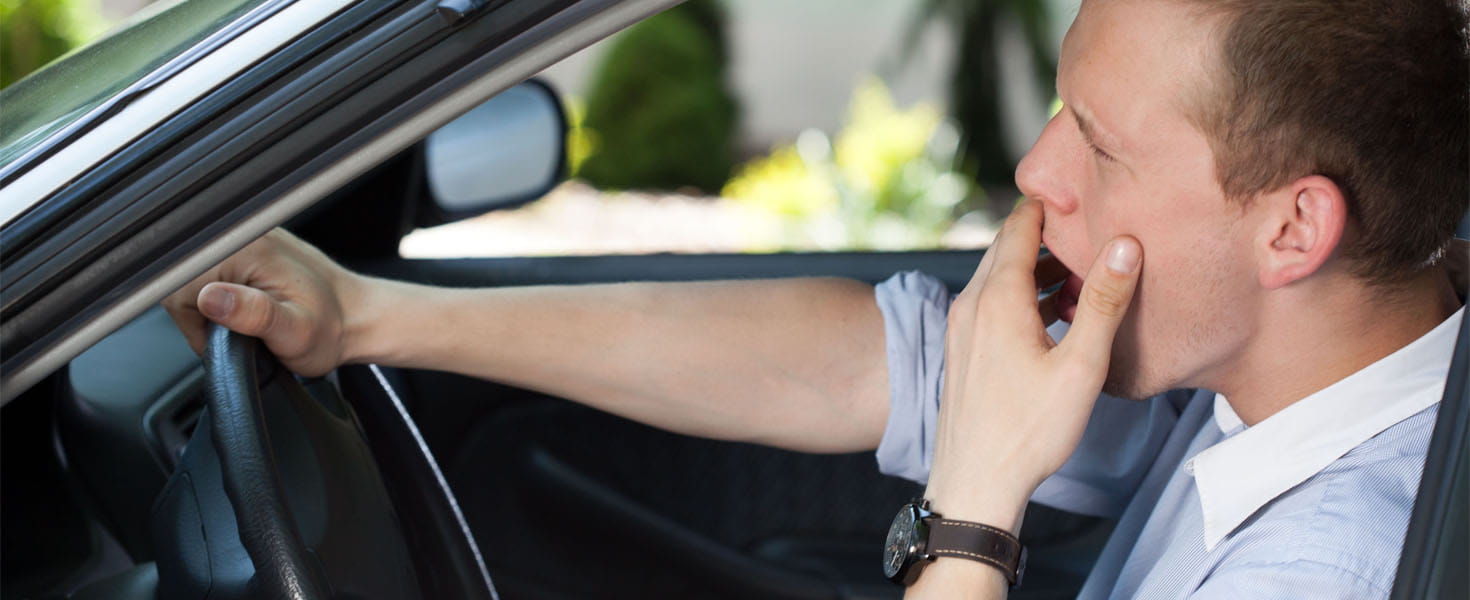Contact Your Local Rep
Public & Government Affairs contacts - by region
Contact Your Local Rep
Public & Government Affairs contacts - by region
Media Note: B-Roll of Drowsy Driving for Broadcast Use is Available | 1 | 2
Springing forward can mean falling back into a bad driving habit – drowsy driving. The arrival of Daylight Saving Time this weekend means one less hour of sleep, a darker morning commute and the potential for more sleepy drivers on the road. AAA is reminding drivers to adjust their sleeping habits along with their clocks, to stay alert behind the wheel and to look out for pedestrians, especially children who will be on their way to school and may be hard to see.
“When the time changes, sleep cycles are interrupted and drivers can be more tired than they realize,” said Jim Lardear, AAA Director of Public and Government Affairs. “Losing one hour of sleep takes an adjustment and drivers need to prepare by getting more rest, especially on Sunday.”
The Centers for Disease Control and Prevention says that 35% of U.S. drivers sleep less than the recommended minimum of seven hours daily. Previous AAA research indicates that nearly all drivers (96%) say they view drowsy driving as a serious threat to their safety and a completely unacceptable behavior. However, 29% admitted to driving when they were so tired they had a hard time keeping their eyes open at some point in the previous month before the survey.
“Knowing the warning signs of drowsiness can help drivers avoid dozing off behind the wheel.” said Lardear. “Symptoms include having trouble keeping your eyes open, drifting from your lane and not remembering the last few miles driven.”
Drivers however should not rely on their bodies to provide warning signs for drowsiness and should instead prioritize getting at least seven hours of sleep before hitting the road.
To avoid drowsy driving, AAA recommends that drivers:
- Travel at times of the day when they are normally awake
- Prioritize sleep, getting at least seven hours a night
- Avoid medications that cause drowsiness or other impairment
For longer trips, drivers should:
- Schedule a break every two hours or every 100 miles
- Travel with an alert passenger and take turns driving
- Do not underestimate the power of a quick nap. Pulling into a rest stop and taking a quick catnap―at least 20 minutes and no more than 30 minutes of sleep―can help to keep you alert on the roads
School Safety
Losing an hour over the weekend may make drivers feel foggy for the Monday morning commute. The morning commute for several weeks to come, will be much darker than what drivers have been used to in the last few weeks. It’s important for drivers to be alert and remember that children will be on their way to school and may be hard to see. Seventy-five percent of pedestrian fatalities happen when it’s dark, according to findings from the Governor’s Highway Safety Association (GHSA) released in 2021.
AAA recommends the following:
- Slow Down. Speed limits in school zones are reduced for a reason. A pedestrian struck by a vehicle traveling at 25 mph is nearly two-thirds less likely to be killed than a pedestrian struck by a vehicle traveling just 10 mph faster.
- Stay Alert. Drivers should always avoid distractions while driving, but it’s particularly important in school zones and residential neighborhoods.
- Headlights. Turn on the vehicle’s daytime running lights or headlights—even during the day—so children and other drivers can see you more easily. But, don’t forget to turn them off when you reach your destination to maintain your battery life.
Tips for Pedestrians:
- While walking, pocket the cell phone and avoid listening to music/audio player at a volume that prohibits you from hearing approaching danger.
- Cross at intersections or crosswalks - not in the middle of the street or between parked cars. Do not jaywalk.
- Avoid walking in traffic where there are no sidewalks or crosswalks. If you have to walk on a road that does not have sidewalks, walk facing traffic.
- Evaluate the distance and speed of oncoming traffic before you step out into the street.
- Wear bright colors or reflective clothing if you are walking near traffic at dawn, dusk and night. Carry a flashlight when walking in the dark.
- Allow extra time and distance for a vehicle to stop in inclement weather.
- Do not let umbrellas or jacket hoods block your view of approaching traffic.
Slow Down Move Over
Tired drivers are not as focused and while there is more daylight, they are still at risk of being distracted. First responders, construction workers and people stranded with a breakdown on the side of the road are vulnerable to drivers who are not paying attention and are at a greater risk of being hit.
- It's not just tow providers and other emergency responders being killed on the side of the road. Since 2015, over 1,600 people have been struck and killed while outside of a disabled vehicle.
To protect roadside workers, drivers stranded with a breakdown, and others, AAA offers these tips:
- Remain alert, avoid distractions and focus on the task of driving.
- Keep an eye out for situations where emergency vehicles, tow trucks, utility service vehicles or disabled vehicles are stopped on the side of the road.
- When you see these situations, slow down and if possible move one lane over and away from the people and vehicles stopped at the side of the road.
Headlights
Since Daylight Saving brings more hours of light, drivers may not use their headlights as often. But when they do, a lack of visibility at night can make for unsafe driving conditions. Changing the clocks is a good reminder to check the conditions of your headlights.
- With 50% of crashes occurring at night, drivers should check their headlights for signs of deterioration and invest in new headlights or, at a minimum, a low-cost headlight cleaning and restoration to boost the safety of driving after dark.
- Headlights can show signs of deterioration after 3 years but most commonly by year 5.
- AAA suggests drivers check their headlights for changes in appearance such as yellowing or clouding. If the bulb is difficult to see, it is time to have the lens replaced or restored as soon as possible.
- Replacement and restoration services are available at most repair shops, including AAA Approved Auto Repair facilities.
- Do-it-yourself restoration offers some savings for consumers, is relatively simple, and provides a sufficient improvement in light output.
- Make sure headlights are correctly re-aimed to maximize forward lighting performance and minimize glare to oncoming and preceding drivers.
About AAA:
AAA provides automotive, travel, and insurance services to more than 62,000,000 members nationally. AAA advocates for the safety and mobility of its members and has been committed to outstanding road service for more than 100 years. AAA is a non-stock, membership corporation working on behalf of motorists, who can map a route, find local gas prices, discover discounts, book a hotel, and track their roadside assistance service with the AAA Mobile app (AAA.com/mobile) for iPhone, iPad and Android. For more information on joining or renewing a Membership, visit www.AAA.com.
For More information and local interviews:
Connecticut – Tracy Noble, TNoble@aaamidatlantic.com
Delaware – Jana Tidwell, JTidwell@aaamidatlantic.com
Indiana – Kara Hitchens, khitchens@aaa-alliedgroup.com
Kansas – Shawn Steward, ssteward@aaa-alliedgroup.com
Kentucky – Lori Weaver Hawkins, lweaverhawkins@aaa-alliedgroup.com
Maryland – Ragina Ali, RAli@aaamidatlantic.com
New Jersey – Tracy Noble, TNoble@aaamidatlantic.com
Ohio – Kara Hitchens, khitchens@aaa-alliedgroup.com
Oklahoma – Leslie Gamble, Leslie.Gamble@aaaok.org
Pennsylvania – Jana Tidwell, JTidwell@aaamidatlantic.com
South Dakota – Shawn Steward, ssteward@aaa-alliedgroup.com
Virginia – Morgan Dean, Morgan MDean@aaamidatlantic.com
Washington, DC – Ragina Ali, RAli@aaamidatlantic.com
West Virginia – Lori Weaver Hawkins, lweaverhawkins@aaa-alliedgroup.com
Related Articles
Contact Your Local Rep
Public & Government Affairs contacts - by region








